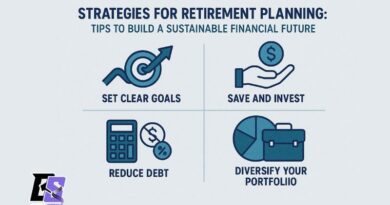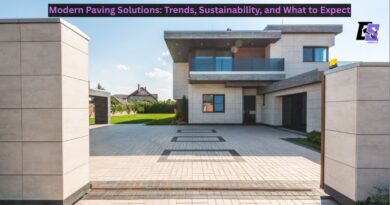Smart Strategies For Apartment Building Maintenance Success
Why Apartment Building Maintenance Matters
Proper maintenance of an apartment building is essential for owners and residents alike. It ensures a safe and welcoming environment, protects property values, and prevents costly issues. A strong maintenance strategy is a key investment in the community’s future.
Communities with proactive property care experience significantly reduced tenant turnover and lower vacancy rates. Building long-term trust with residents also hinges on having responsive, knowledgeable teams. Many communities choose to partner with experienced management providers for this very reason. For example, properties working with HOA management Denver can implement consistent maintenance plans tailored for multifamily housing, helping avoid emergencies and keeping residents content with their homes. These customized plans often include routine inspections, preventative repairs, and quick-response protocols. Such measures extend the lifespan of building systems and enhance residents’ overall quality of life. Ultimately, well-maintained properties foster pride in the community and contribute to sustained neighborhood growth.
Common Challenges In Apartment Property Care
Apartment buildings are often complex ecosystems, and maintenance teams must juggle a unique blend of challenges that range from infrastructure quirks to budget constraints. One of the most significant hurdles in older buildings is hidden damage—worn plumbing, outdated wiring, and original HVAC components can all require significant investment. Routine inspections might reveal further complications, such as foundation settling or water seepage, that are much easier and less expensive to address early. Still, ballooning material costs and the competition for skilled labor can stretch maintenance budgets thin, delaying some repairs longer than ideal.
Weather can also wreak havoc on even the best-maintained properties. Harsh winters, heavy rain, and high winds can all contribute to leaks, power outages, or roof damage. Meanwhile, resident expectations continue to rise. Today’s renters demand rapid repair of issues, transparency in communication, and consistent quality of work. As noted in recent reporting on apartment maintenance struggles, failing to address these rising standards can lead to poor reviews, increased turnover, and even strained relations within the building community. Overcoming these challenges requires careful planning, resourcefulness, and adaptability.
Preventative Maintenance: A Game-Changer
The old saying “an ounce of prevention is worth a pound of cure” takes on new meaning in apartment building management. Preventative maintenance is more than checking a box on a to-do list—it’s about actively guarding against surprise breakdowns and costly repairs through regular and intentional action. For example, instead of waiting for a water heater to fail and flood several units, scheduled inspection and replacement can save thousands of dollars and countless hours of tenant disruption.
Establishing and sticking to a preventative maintenance schedule pays off in the short and long term. Data suggests that buildings with structured preventative programs have up to 30% fewer emergency repairs than buildings that address issues only as they arise. Teams might create detailed seasonal checklists, including cleaning dryer vents to insulate exposed pipes before winter hits. These strategies minimize the risk of disaster and extend the lifespan of high-value assets, reducing costs and inconveniences for everyone involved.
How Technology Is Transforming Building Management
Technology is making maintenance more efficient and transparent than ever before. Digital platforms now allow management teams to log service requests, assign tasks, and track resolution timelines with just a few clicks. Integrated systems instantly notify staff of new maintenance issues, reducing response times and offering residents immediate reassurance. These tools also provide valuable data insights, allowing teams to optimize staffing, spot recurring problems, and set more accurate budget forecasts.
Innovations like smart home sensors and automated leak detectors deliver immediate alerts for potentially damaging conditions, empowering maintenance staff to act before problems escalate. Mobile apps enable residents to submit repair requests and track progress at their convenience, promoting engagement and peace of mind. These advances fundamentally change how property care is delivered, making modern apartments safer and more responsive to resident needs by default.
The Role Of Communication Between Management And Residents
Open and accessible communication channels between building management and residents create the foundation for trust and cooperation. When residents can quickly and easily report needed repairs—or receive timely updates about maintenance projects—they feel confident that their voices matter and problems are taken seriously. This confidence translates into higher satisfaction levels, longer tenancies, and a more positive community atmosphere.
The methods for managing this communication can take many forms: dedicated property management apps, resident-only online portals, group text alerts, regular email newsletters, or traditional paper notices posted in common areas. What matters most is consistency and responsiveness. Establishing expectations around turnaround times and providing transparent status updates can go a long way to ease frustrations. With transparent processes, even disruptive projects—such as elevator repairs or roof replacements—tend to be met with patience and understanding rather than anger.
Sustainable Practices For Modern Properties
- Switching to LED lighting and energy-efficient appliances reduces energy consumption and long-term costs for property owners and residents.
- Installing low-flow faucets, showerheads, and toilets helps conserve water, a crucial issue in many urban environments.
- Running comprehensive recycling and composting initiatives empowers residents to live more sustainably and can improve the building’s overall waste management.
- Choosing green-certified cleaning products helps maintain healthier indoor air quality while minimizing the building’s ecological footprint.
- In outdoor areas, drought-tolerant landscaping and innovative irrigation systems ensure beautifully maintained green spaces without excessive water waste.
These sustainable steps don’t have to be introduced all at once; gradual implementation allows properties to spread out costs and measure the impact of each change. Over time, more sustainable buildings appeal to eco-minded renters, who increasingly seek communities that align with their values. When done consistently, even simple changes can propel a property ahead of others in the local market.
Habits Of Successful Building Maintenance Teams
- Routine Inspections: Scheduling regular walkthroughs means issues like corrosion, leaks, or broken safety features are discovered early and fixed quickly, minimizing disruptions for everyone.
- Thorough Documentation: Utilizing digital logs or cloud-based tracking platforms ensures every request, fix, or system upgrade is recorded for future reference, allowing any team member to understand the building’s maintenance history instantly.
- Open Communication: Maintenance leaders who provide residents with clear repair timelines and honest updates build lasting reputations for reliability and service.
- Ongoing Education: Encouraging the team to attend industry training or certification programs helps everyone stay sharp and adapt to changing technologies or evolving building codes.
In resident surveys, teams who embrace these habits are routinely lauded for their professionalism and responsiveness. This proactive approach also helps prevent burnout and keeps building operations running year-round. High-performing teams create stable, pleasant living conditions and make a property feel like home.
Read Also:




